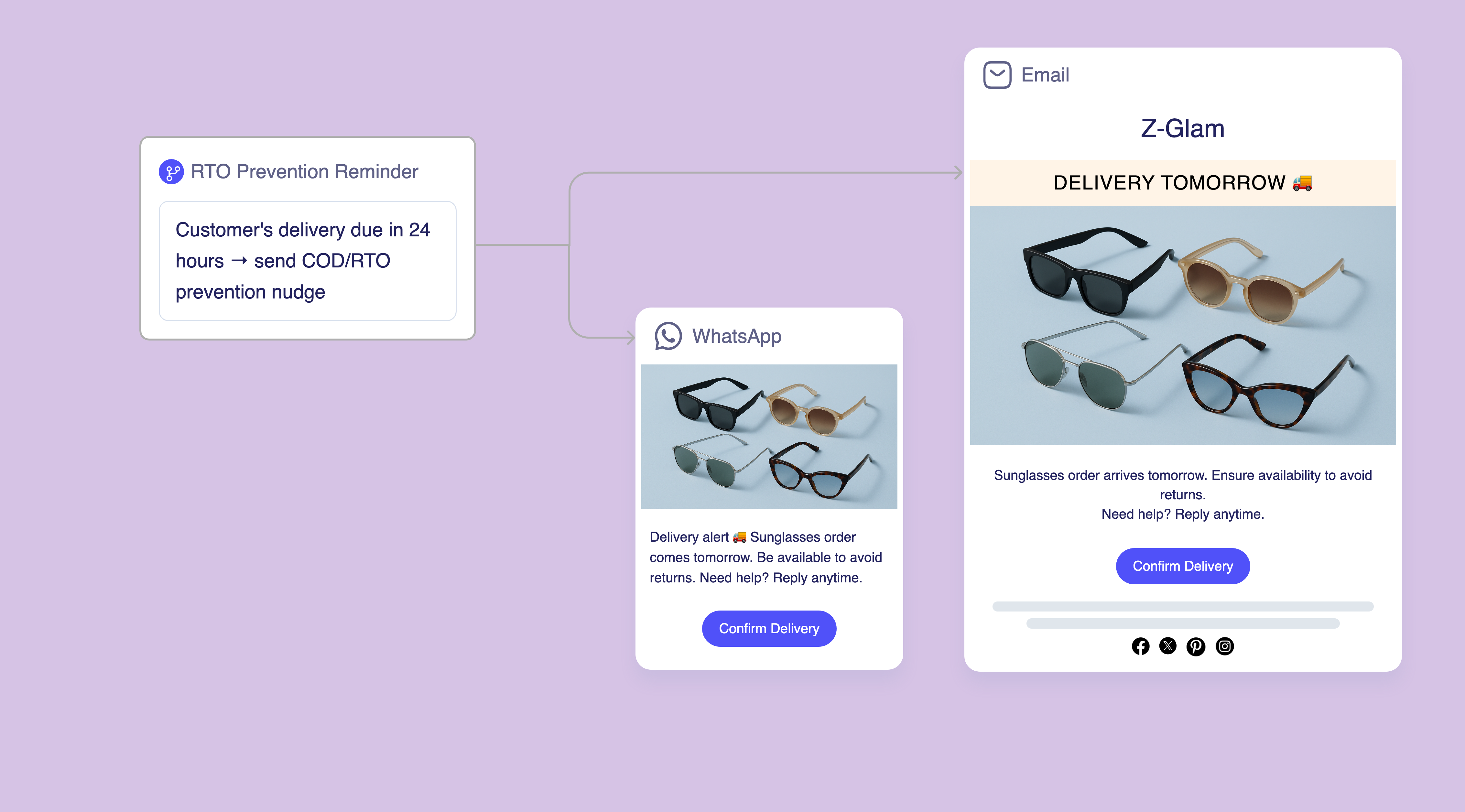
RTO Prevention Nudges
Reduce failed deliveries by proactively reminding customers to ensure someone will be home to receive their order.

What is an RTO Prevention Nudge?
RTO Prevention Nudges are pre-delivery reminders sent via Email and WhatsApp to confirm that a customer will be available to receive their package. By checking availability upfront, brands reduce missed deliveries, lower logistics costs, and improve order success rates.
Why RTO Prevention Nudges Matter

Challenges

Opportunities
Outcomes
Lower Return-to-Origin Rates
Reduced Failed Delivery Incidents
Higher Customer Satisfaction
Who is it for?
Audience
Exclusions
How it Plays Out
A sample sequence for this use case.
Will someone be home tomorrow? Your delivery arrives tomorrow. Please confirm → [CTA]
Your package arrives today! Will someone be home to receive it? Confirm now → [Link]
Delivery coming soon - confirm someone will be available → [Confirm Availability]
Last chance to reschedule if no one will be home → [Reschedule Delivery]
Best Practices
- Send initial reminders 24 hours before delivery to give customers adequate time to arrange availability or reschedule.
- Provide easy rescheduling options for customers who cannot be available rather than forcing inconvenient delivery attempts.
- Include delivery time windows when available to help customers plan their availability around expected delivery timing.
RTO Prevention Nudges Examples & Prompts
Channel Examples
Automate with Zenie Prompts
With Zenie, you can automatically trigger availability reminders based on delivery timing and customer preferences.
Explore Similar eCommerce Marketing Strategies
FAQs
Why are RTO prevention nudges important for delivery success?
RTO prevention nudges significantly reduce failed delivery attempts by ensuring customers are prepared to receive packages. This proactive approach prevents costly return-to-origin incidents while improving overall delivery efficiency and customer satisfaction.
What timing works best for delivery availability reminders?
Send initial reminders 24 hours before delivery with follow-up confirmations on delivery day. This timing provides adequate notice for customers to arrange availability while maintaining awareness of incoming deliveries.
Should RTO prevention campaigns offer delivery rescheduling options?
Yes, providing easy rescheduling options prevents failed delivery attempts when customers cannot be available. Flexible scheduling improves delivery success rates while accommodating customer convenience preferences.
How do you handle customers who don't respond to availability confirmations?
Proceed with delivery attempts while flagging orders for potential RTO risk. Consider phone outreach for high-value orders or customers with previous delivery failure patterns.
What metrics measure RTO prevention nudge effectiveness?
Track delivery confirmation rates, RTO incident reduction, first-attempt delivery success rates, and customer satisfaction with delivery communication. Monitor whether proactive reminders lead to measurable improvements in delivery performance and cost reduction.


